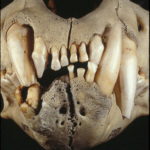I'll never forget my first lion.
A colleague and I had just arrived in the Semliki Valley, in the Congo, to a part of that valley then known as the most predator-rich region of Africa, with loads of lions and heaps of hyenas. Lots of leopards too. We arrived at the main base camp for a large expedition that I was to join a year later (this was a brief visit) and were told to find the satellite camp, out in the bush.
"Ten clicks that way, then a left on their road. Good luck finding the road."
Good luck indeed. Took us forever. And, at one point, after night fell, we had the brilliant idea…
Tsavo
In 1898, railway workers in Tsavo, Kenya were terrorised by a pair of man-eating lions, who killed at least 28 people during a 10-month reign of terror. It ended in December when a British officer called Lt. Col. John H. Patterson killed both beasts. The man-eaters' notorious exploits have been immortalised in no less than three Hollywood films, including most recently The Ghost and the Darkness. But despite their fame, no one is quite sure how many people they killed. The Ugandan Railway Company said 28; Patterson claimed it was 135.
Both parties had reasons to lie, either playing…
It has become virtually axiomatic that as climate shifts or other potential insults to the ecology of a given area occur, plants and animals enclosed in parks bounded by "impermeable" landscapes are at great risk. Instead of the extreme ranges of a plant or animal moving north or south, or across a gradient of rainfall, or up or down in elevation, organisms that are protected in parks are also stuck in the parks and risk local extinction when change happens or disease becomes endemic, or poaching uncontrolled or fire more common or .... well, we can go on and on.
In a new study on "The…
